Key takeaways:
- Supplier Quality Assurance (SQA) emphasizes the importance of building strong partnerships with suppliers to ensure product quality and customer satisfaction.
- Consistent communication and compliance with food safety standards are critical components of maintaining high supplier quality.
- Personal relationships and direct engagement, such as taste testing and assessing sourcing practices, enhance the evaluation of suppliers.
- Leveraging technology, like supplier management software and performance scorecards, improves efficiency and oversight in supplier management.
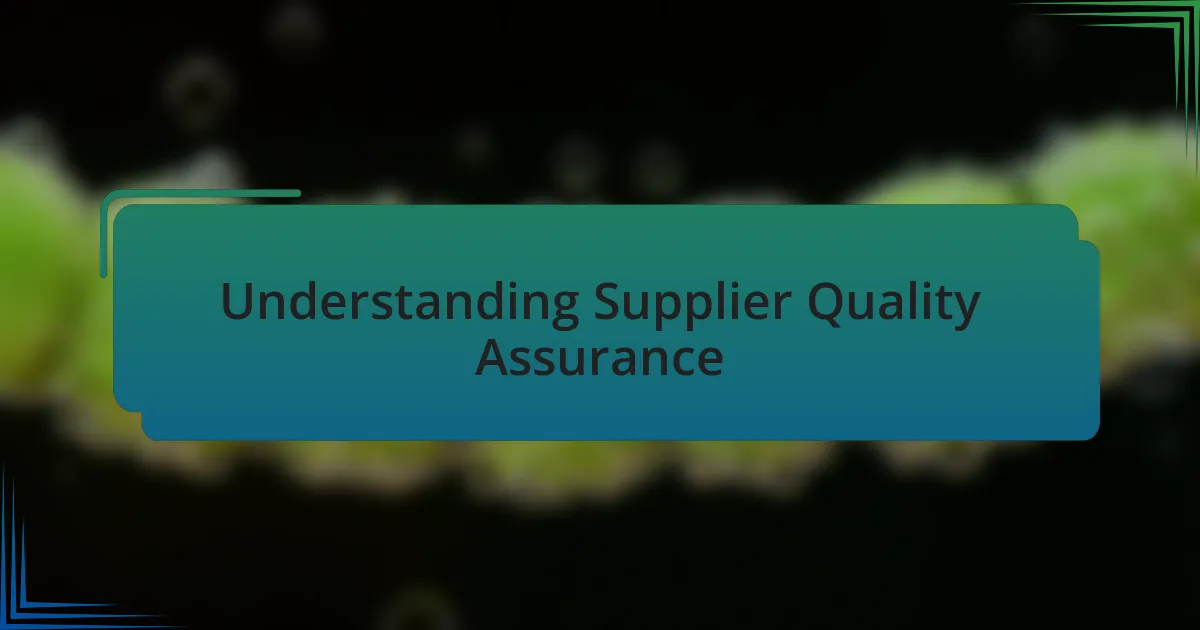
Understanding Supplier Quality Assurance
Supplier Quality Assurance (SQA) is essential in ensuring that the products we source meet the high standards our customers expect. I remember a time when I received a shipment of pasta that was not only subpar but also lacked the authentic flavor our brand promises. This experience highlighted the critical importance of rigorous quality checks—without them, we risk disappointing our customers and damaging our reputation.
What I’ve learned through years of working in food trading is that SQA goes beyond just inspecting products; it’s about building partnerships with suppliers that prioritize quality. For instance, I once collaborated closely with a supplier in Italy who consistently delivered outstanding ingredients. Our frequent communication allowed me to express my expectations and also understand their production process, fostering a relationship that went far beyond a mere transaction.
It’s worth considering what your business could achieve with a robust SQA process. Have you ever thought about how your supplier’s practices directly impact the quality of your final product? By investing time in quality assurance—whether through routine audits, sampling, or supplier training—you’ll not only enhance product quality but also strengthen your overall brand promise.
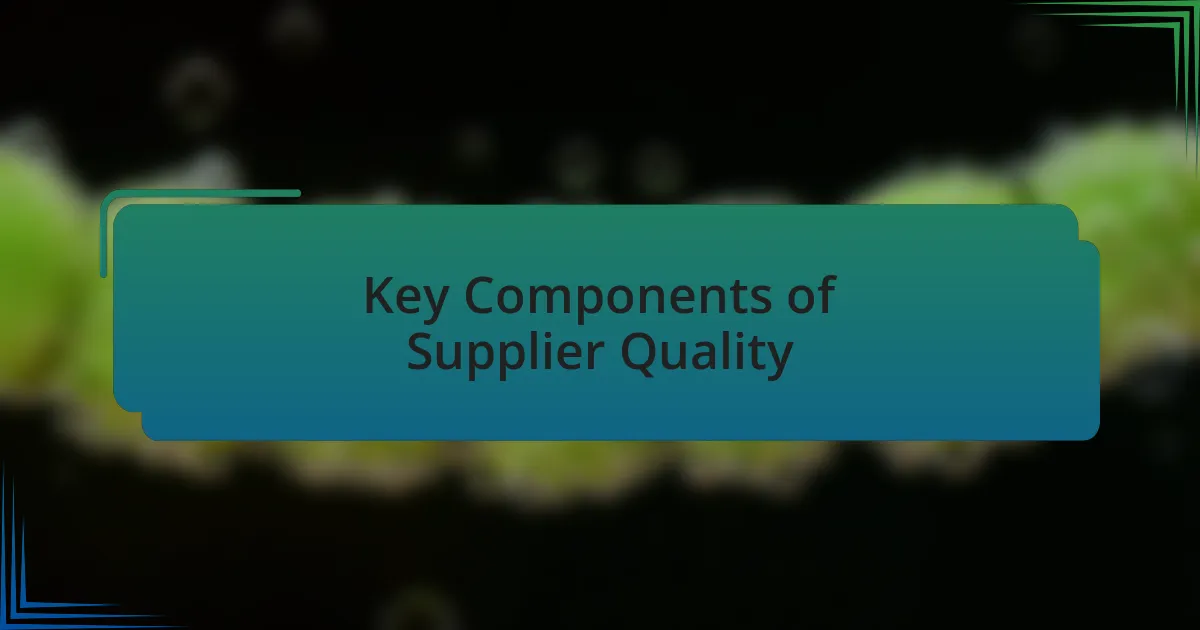
Key Components of Supplier Quality
One key component of supplier quality is consistent communication. I recall a situation where a lack of dialogue led to a shipment arriving with incorrect specifications. By reaching out to my supplier, we quickly resolved the issue. It made me realize that clear communication channels can catch potential problems before they escalate, ensuring that everyone is aligned on quality expectations.
Another integral aspect is the supplier’s adherence to food safety standards. During a visit to one of my suppliers, I inspected their processing facility and was amazed by their meticulous cleanliness and adherence to regulations. It was reassuring to see firsthand the commitment to food safety, as it directly impacts the final product’s quality and protects our customers.
Lastly, I find continuous improvement practices to be crucial. When I implemented regular training sessions with my suppliers, the results were impressive; they began introducing innovative methods to enhance product quality. This mutual investment in growth not only improved the products we received but also fostered a deeper sense of collaboration. Isn’t it amazing how investing in your suppliers can yield benefits for your entire supply chain?
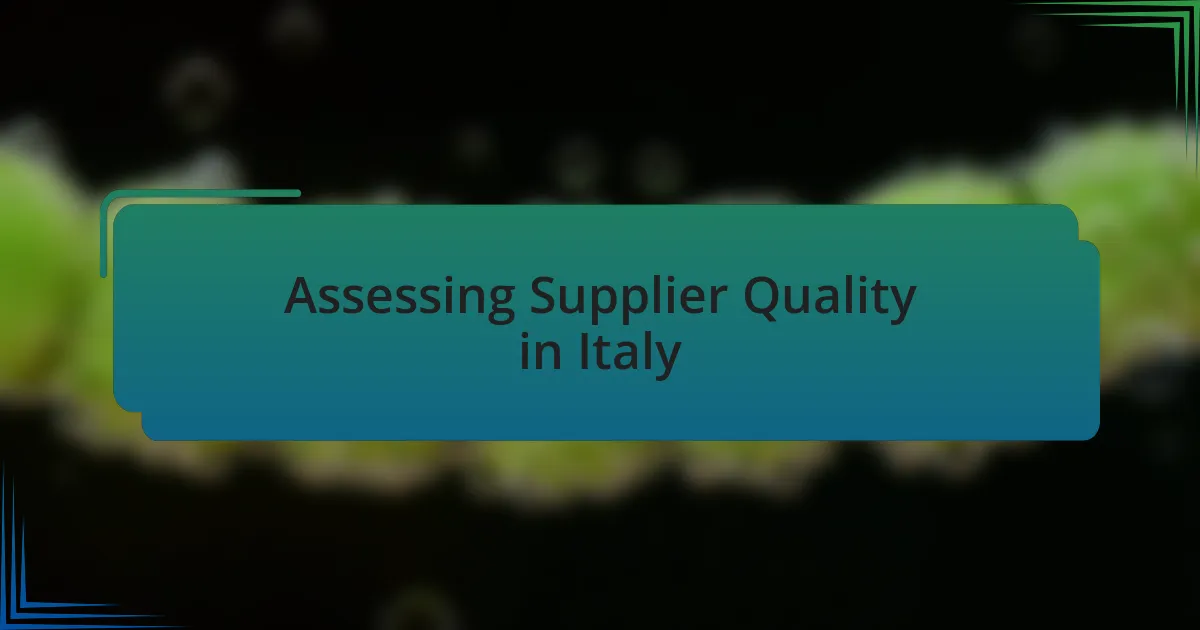
Assessing Supplier Quality in Italy
When assessing supplier quality in Italy, I prioritize visiting the production sites. I remember walking through a family-run pasta factory in Bologna, where I was welcomed like one of their own. It was here that I noticed the passion and pride each worker took in their craft, and their attention to detail was palpable. This personal connection goes beyond mere metrics; it provides valuable insight into the heart of the quality they deliver.
Another critical aspect is evaluating suppliers’ certifications. While conducting research, I learned to look for certifications such as ISO 22000, which emphasizes food safety management systems. Once, I encountered a supplier who proudly displayed their certifications, and it sparked a meaningful conversation about their approach to maintaining high standards. I couldn’t help but feel a sense of reassurance knowing that they were committed to both quality and safety.
Finally, I believe feedback loops are essential in supplier assessments. After a shipment, I typically review the quality and share constructive insights with my suppliers. I recall a time when a batch of olive oil didn’t meet our expectations; discussing it thoughtfully led to adjustments in their production processes. It makes me wonder, how often do we share our learning experiences with partners? This dynamic exchange not only enhances the quality but also strengthens our relationship, creating a more resilient supply chain.
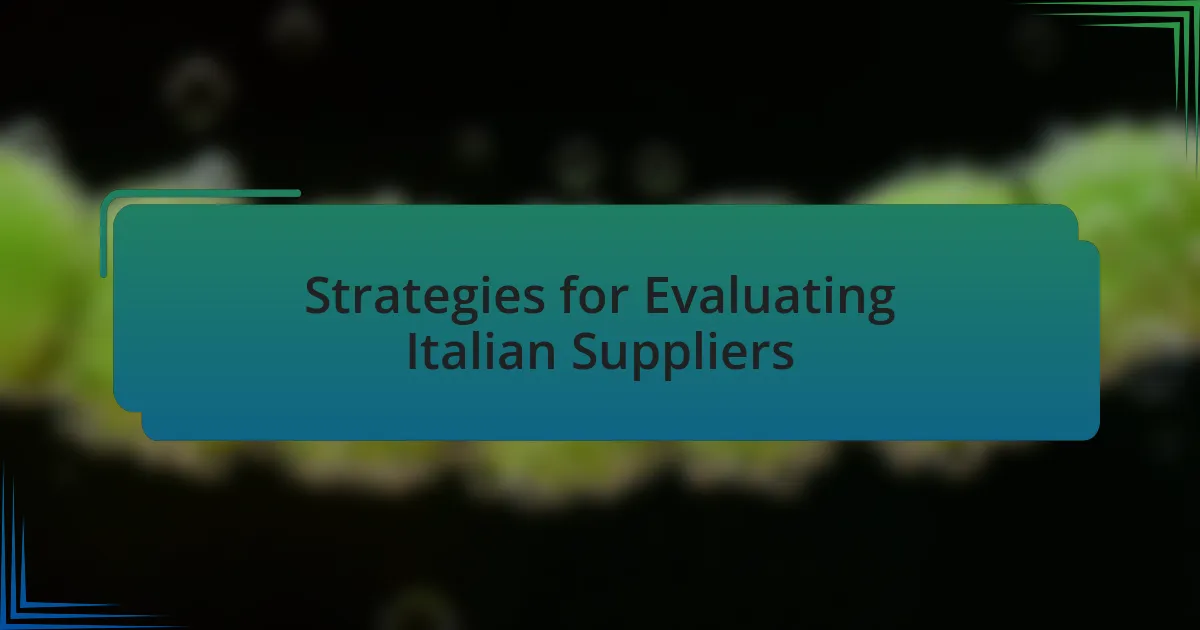
Strategies for Evaluating Italian Suppliers
One effective strategy for evaluating Italian suppliers is establishing personal relationships through taste testing. I recall an occasion when I was invited to a cheese tasting at a small dairy farm in Tuscany. The owner shared stories about each cheese’s origin, and as I sampled the flavors, I could gauge not only the quality but also the dedication that went into each product. Engaging directly with suppliers in this way not only sharpens my judgment of their offerings but fosters a bond rooted in mutual respect and shared passion for quality.
Another key approach involves understanding a supplier’s sourcing practices. During one visit, I met a supplier who accentuated the importance of local, seasonal ingredients. Their commitment was evident in how they sourced tomatoes from nearby farms rather than opting for cheaper imports. This decision not only elevates product quality but also speaks volumes about their principles. I often find myself asking, how confident should we be in products that lack a transparent supply chain? In my experience, suppliers who value local sourcing are typically more committed to maintaining high standards.
Lastly, I find that conducting regular quality audits can be instrumental in evaluating suppliers. I’ve participated in audits where I scrutinized not just the final products but also the processes behind them. For instance, at a pasta manufacturing facility, I was impressed by their meticulous sanitation practices and the evident pride taken in production. Reflecting on this, I ask myself, what does a supplier’s environment say about their commitment to quality? These audits help ensure that we align with suppliers who not only meet our expectations but are also passionate about continuous improvement.
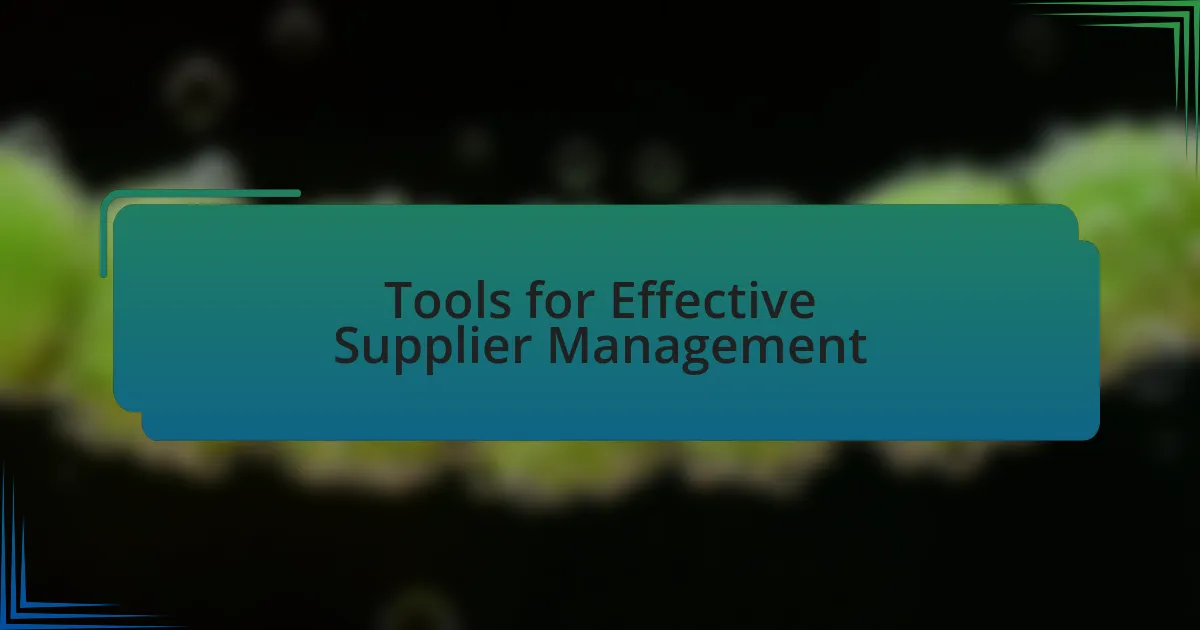
Tools for Effective Supplier Management
When managing suppliers, I find that leveraging technology can significantly enhance efficiency. For instance, I’ve used supplier management software to track performance metrics and ensure timely deliveries. It’s fascinating how a centralized dashboard can provide real-time insights into each supplier’s reliability; I often ask myself, how did we ever manage without these tools?
Additionally, communication tools like dedicated platforms for feedback and discussion have transformed my interactions with suppliers. I remember a time when we faced a shipment delay; using an instant messaging platform allowed us to address the issue promptly, leading to a cooperative solution. Such direct communication cultivates trust and transparency, crucial elements for long-term partnerships.
Another invaluable tool is the use of scorecards for assessing supplier performance. I’ve created scorecards that rate suppliers on various criteria, from product quality to delivery consistency. It’s an eye-opening process; sometimes, the numbers reveal patterns that aren’t immediately apparent, prompting me to ask, are we really seeing the whole picture? This structured approach helps ensure that our standards remain high while nurturing relationships with suppliers committed to excellence.